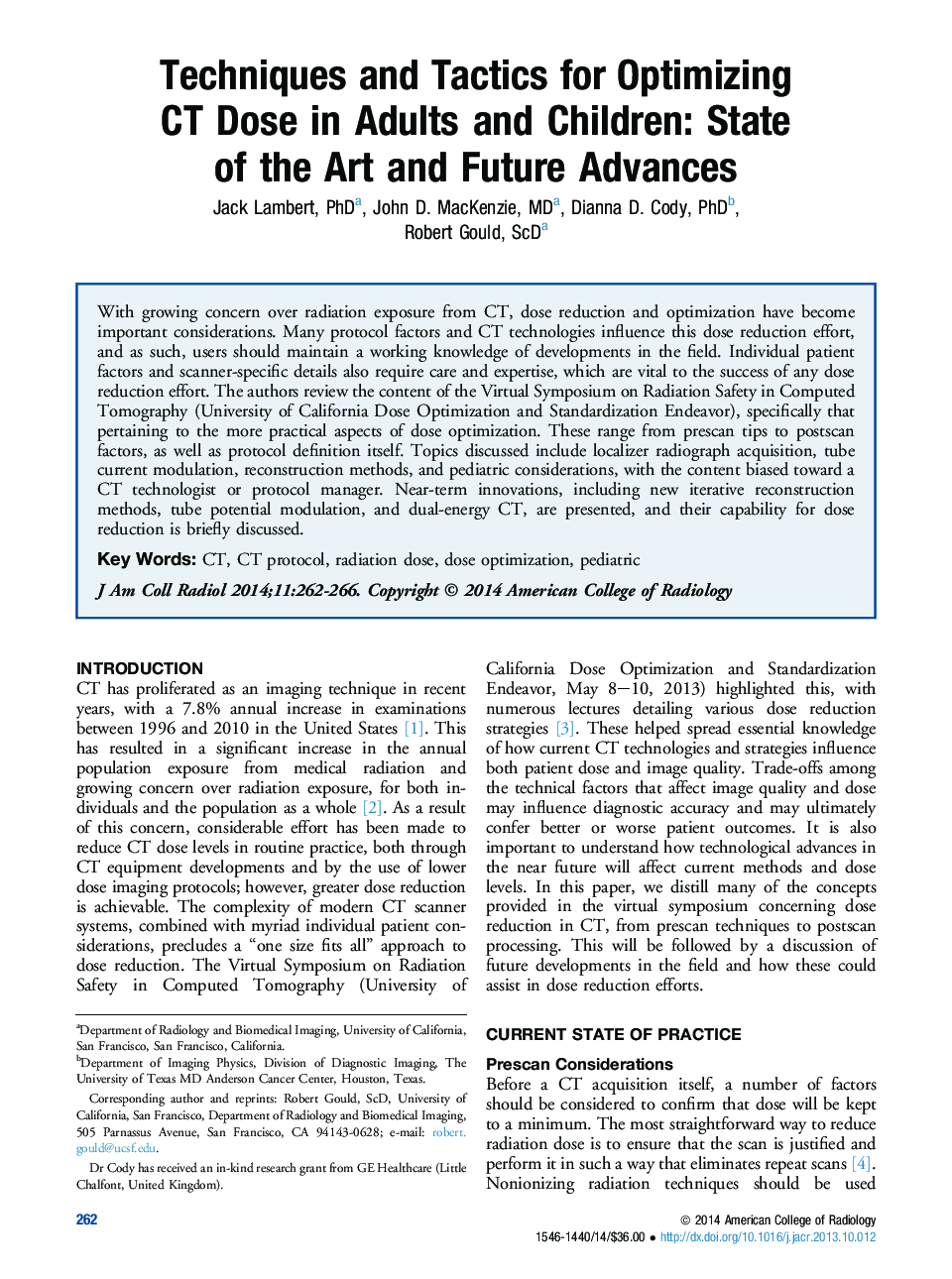| Article ID | Journal | Published Year | Pages | File Type |
|---|---|---|---|---|
| 4230864 | Journal of the American College of Radiology | 2014 | 5 Pages |
Abstract
With growing concern over radiation exposure from CT, dose reduction and optimization have become important considerations. Many protocol factors and CT technologies influence this dose reduction effort, and as such, users should maintain a working knowledge of developments in the field. Individual patient factors and scanner-specific details also require care and expertise, which are vital to the success of any dose reduction effort. The authors review the content of the Virtual Symposium on Radiation Safety in Computed Tomography (University of California Dose Optimization and Standardization Endeavor), specifically that pertaining to the more practical aspects of dose optimization. These range from prescan tips to postscan factors, as well as protocol definition itself. Topics discussed include localizer radiograph acquisition, tube current modulation, reconstruction methods, and pediatric considerations, with the content biased toward a CT technologist or protocol manager. Near-term innovations, including new iterative reconstruction methods, tube potential modulation, and dual-energy CT, are presented, and their capability for dose reduction is briefly discussed.
Related Topics
Health Sciences
Medicine and Dentistry
Radiology and Imaging
Authors
Jack PhD, John D. MD, Dianna D. PhD, Robert ScD,
